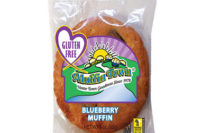America’s melting pot continues to expand. Hispanic and Asian populations within the U.S. have increased 43% since 2000, according to “Understanding Multicultural Marketing,” a recent article by Yahoo! and Mindshare, a global media network. Additionally, seven in 10 ethnic minorities say that ethnicity is a significant part of their identity.
Ethnic minorities also represent trillions of dollars in buying power and that number continues to grow. By 2015, buying power is expected to reach $1.5 trillion for Hispanics, $1.2 trillion for African-Americans, $775 billion for Asian-Americans and $90.4 billion for Native Americans, reports the Selig Center for Economic Growth at the University of Georgia’s Terry College of Business, Athens.
Businesses that aren’t involved in multicultural marketing, therefore, are missing a lucrative opportunity.
Similarities and differences
Although there are many commonalities in terms of marketing products to multiple cultures instead of a single demographic, there are a number of disparities and intricacies of which businesses should be aware.
For instance, a majority of companies offering ethnic products begin marketing to a niche demographic and then expand to a broader audience. “We worked backwards by beginning our marketing in ethnic stores and crossing into mainstream markets,” says Mike Kan, sales manager at Golden Island Jerky Co., a Rancho Cucamonga, Calif.-based company and a division of Formosa Meat Co. The 60-year-old firm, with origins in Taiwan, manufactures more than 20 varieties of beef and pork jerky snacks, including Hickory Black Pepper, Grilled Barbeque, Chili Lime and Kung Pao.
This year, Golden Island is focusing on its national marketing by expanding retail availability in Costco and other major retailers throughout the U.S. as well as launching a new website with e-commerce. “There are several ways to target different demographic groups,” Kan says.
In ethnic markets, some customers seek new and innovative products, while others look for authentic brands that remind them of home. The packaging differences reflect each brand’s audience.
“In Asian markets, customers are seeking traditional products with a traditional look that may be outdated by today’s standards,” Kan says. “Many brands that have become obsolete in Asia are successful in the U.S. because of the appeal to people’s nostalgia.”
Golden Island Jerky’s packaging is geared to mainstream audiences with an authentic, yet modern, look.
In some instances, there are cultural factors to consider when determining a marketing plan. For example, the Hispanic community tends to have larger families, shop more frequently and be more brand loyal.
“If a product offers a great taste and brand value, this demographic will buy it,” says Mark Singleton, vice president of Rudolph Foods, Lima, Ohio. “But these shoppers also are seeking new products and innovative ways to use these foods. With our pork rinds, we don’t have to introduce Hispanic consumers to these products; we remind them that they grew up with these items. The goal is to make them aware of new usage opportunities.”
Within the Asian community’s culture, status issues often come into play. For example, Chinese consumers will shop at Japanese markets, but not vice-versa.
Also, face-to-face relationships are important in the Asian culture. “For this reason, and because most ethnic stores are small chains or independents, we rely a great deal on our distributors [to help us market our products],” Kan says. “Most of them have been with us since the beginning.”
One similarity between traditional and ethnic marketing is the message appeal. Universally, manufacturers are seeking to relay the important attributes of value, quality and convenience.
“Our El Monterey packaging is designed to appeal to all consumers by communicating product information,” says Rachel Cullen, president and CEO of Dinuba, Calif.-based Ruiz Food Products. “Mom, the primary shopper, is value-conscious. At the same time, she looks for foods that are quick and convenient to prepare and those she can feel good about providing [to her family].”
Ethnic markets can offer a wider variety and more obscure products, since these stores typically work off of lower margins than the bigger chains. Although there is a contingent of customers dedicated to these markets, most now also shop at chains and big-box stores, many of which have begun carrying the same brands as Hispanic, Asian and Indian stores.
“This is because some of the big-box stores in certain neighborhoods cater to a specific demographic,” says Aman Singh, vice president of Dallas-based Kaurina’s, a manufacturer of authentic Indian Kulfi and exotic gourmet ice creams. The company recently introduced a 1.6-oz. version of its Kulfi Indian ice cream bar to create awareness of its products and target health-conscious consumers of all ethnicities.
It’s important that the packaging’s design hit a familiar note with the target ethnic group’s culture, yet not be too “over-the-top,” where it loses the appeal of other customers, she says. Kaurina’s ice cream bar packaging has an Indian feel, with a paisley design and traditional colors.
“Second-generation ethnic consumers who may have grown up with these foods, but are not strong speakers of their native language or involved in the culture, won’t buy something that’s too ethnic,” Singh says. “This is why it’s important to have descriptors on the packaging.”
Grecian Delight Foods, Elk Grove Village, Ill., has historically been ethnically focused and is now concentrating its marketing efforts on more mainstream audiences. “Although we haven’t done any ethnic marketing, we have taken what was once a Greek food and branched off to show retailers how our products extend beyond gyro sandwich components,” says Amy Fattori, marketing director. “People now expect unique flavor profiles. In the past, we may have worked to create a more accepted line, now we are looking to develop more unique varieties.”
Promoting ethnic products
To get the word out about their products, manufacturers of ethnic foods often turn to specific marketing channels to reach a more targeted audience. Golden Island Jerky has promoted its lines on Asian television and radio stations as well as in print ads in publications targeting this demographic. “Reaching a concentrated audience can be important, but the downside is it’s not a broad audience,” Kan says. “It’s important to have balance to get a good bang for the buck.”
Many different ethnic communities have dedicated publications and media, which savvy companies use to help support the initial marketing of a new product or line to expand product awareness and get items into more stores.
“In Dallas, there are local radio stations and publications that target specific ethnic communities, so we advertise in these to get more exposure,” Singh says. “Unfortunately, it’s difficult to measure advertising mediums. For snack foods, store presence is the most effective way to market products.”
Marketing methods and channels used for traditional and ethnic marketing have a lot in common, though. Coupons are universal, as is the prevalence of social media and cross-merchandising. “Similar advertising channels influence both mainstream and acculturated ethnic consumers, including in-store signage, coupons, television and social media,” Cullen adds. “Coupons for value-driven consumers are important, whether garnered through online access, smartphones, social media, cross-product promotion, etc.”
Rudolph Foods has benefited from becoming involved in community events and employing focus groups comprising ethnic consumers. “We depend on Hispanics to help determine our taste profiles,” Singleton says. “One of our biggest hits was a bag of pork rinds with a salsa packet, which was a direct reflection of focus groups that revealed people eat pork rinds with hot sauce.”
In the past, businesses had to rely primarily on publications to target specific ethnic markets. Now, there are additional marketing opportunities online and through social media. “The internet has changed everything,” Singleton says. “We get a lot of feedback on Facebook and by watching conversations on social media sites.”
Working with a limited marketing budget, Grecian Delight concentrates on search engine optimization (SEO). “We do some print advertising, but typically reach out via ethnic television and radio vehicles,” Fattori explains.
Targeted enticements
Targeted promotions at the store level can be an effective tool in expanding a product’s ethnic demographic.
“Promotions and proper store positioning are more effective than advertising,” Kan says. “But while we’ve done demos and sales promotions, direct-to-consumer marketing isn’t cost-effective for us. We [also] don’t use coupons much with independents because everyone works with a different system, and this makes it difficult.”
Kaurina’s benefits from good product placement as well as sampling. “The more people that try the product, the better,” Singh says. “We don’t do special promotions, but will provide special offers, like ‘buy one, get one free.’ It’s important to give people an incentive to try new items.”
Store promotions are especially effective during ethnic holidays, such as Cinco de Mayo on May 5 for the Hispanic segment; Diwali, the Festival of Lights, which is celebrated by Hindus between mid-October and mid-November; and the Chinese New Year or Spring Festival, which falls between Feb. 9 and 14.
Rudolph Foods capitalizes on Cinco de Mayo by offering coupons to help drive product awareness. Product placement on stores’ periphery also increases visibility of its lines.
Singh says that whenever Kaurina’s does in-store product demonstrations, it sets up a stand “promoting our product with signage and informational flyers. We’ve distributed handouts and flyers without demos, but haven’t found this to be effective.”
Grecian Delight offers coupons on the retail side targeting a nonethnic demographic. “We’ve discovered some stores offering larger selections of ethnic products will bring in our products and seek more traditional marketing,” Fattori says. “We offer shelf talkers and packaging assistance.”
As ethnic foods become even more plentiful and accessible, the profit potential from catering to diverse demographics will continue to grow for businesses. This makes effective multicultural marketing more important than ever. “From a marketing standpoint, we’re very aware of growing ethnic groups,” Fattori concludes.












